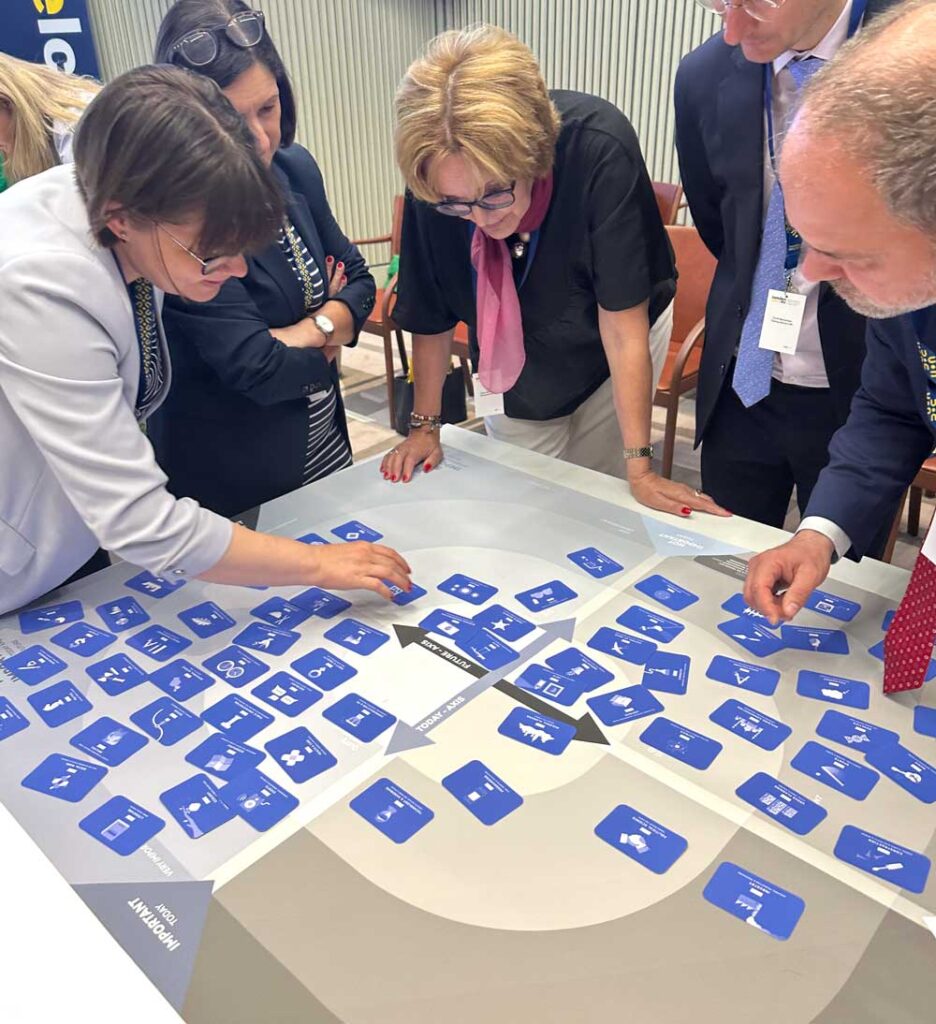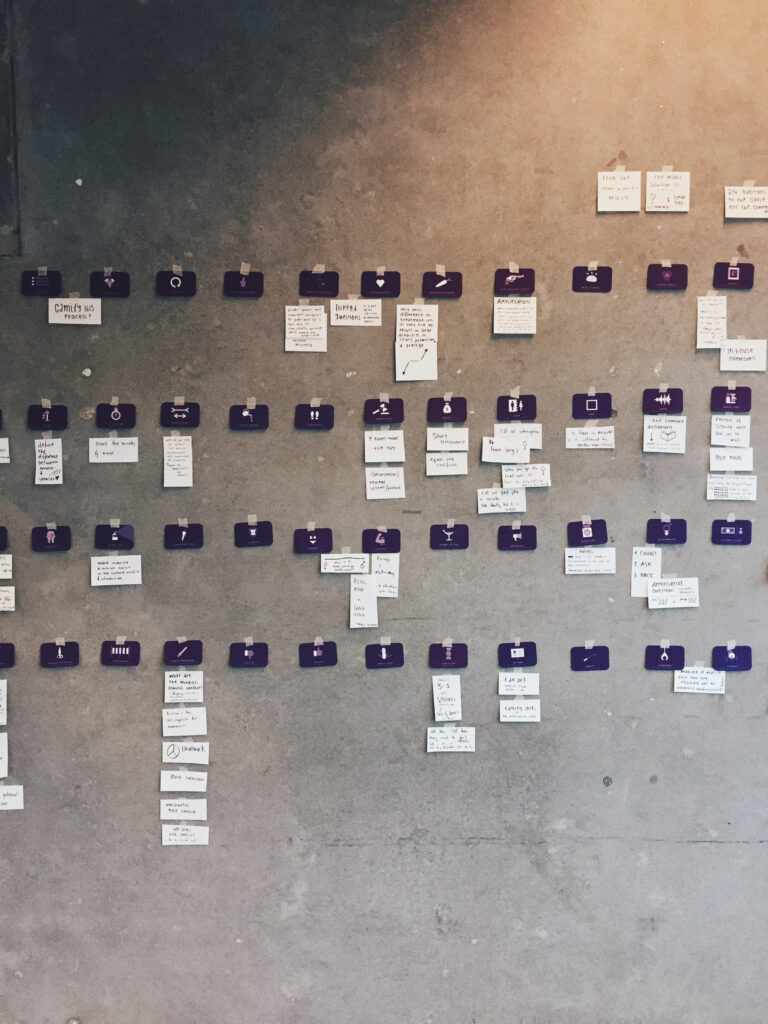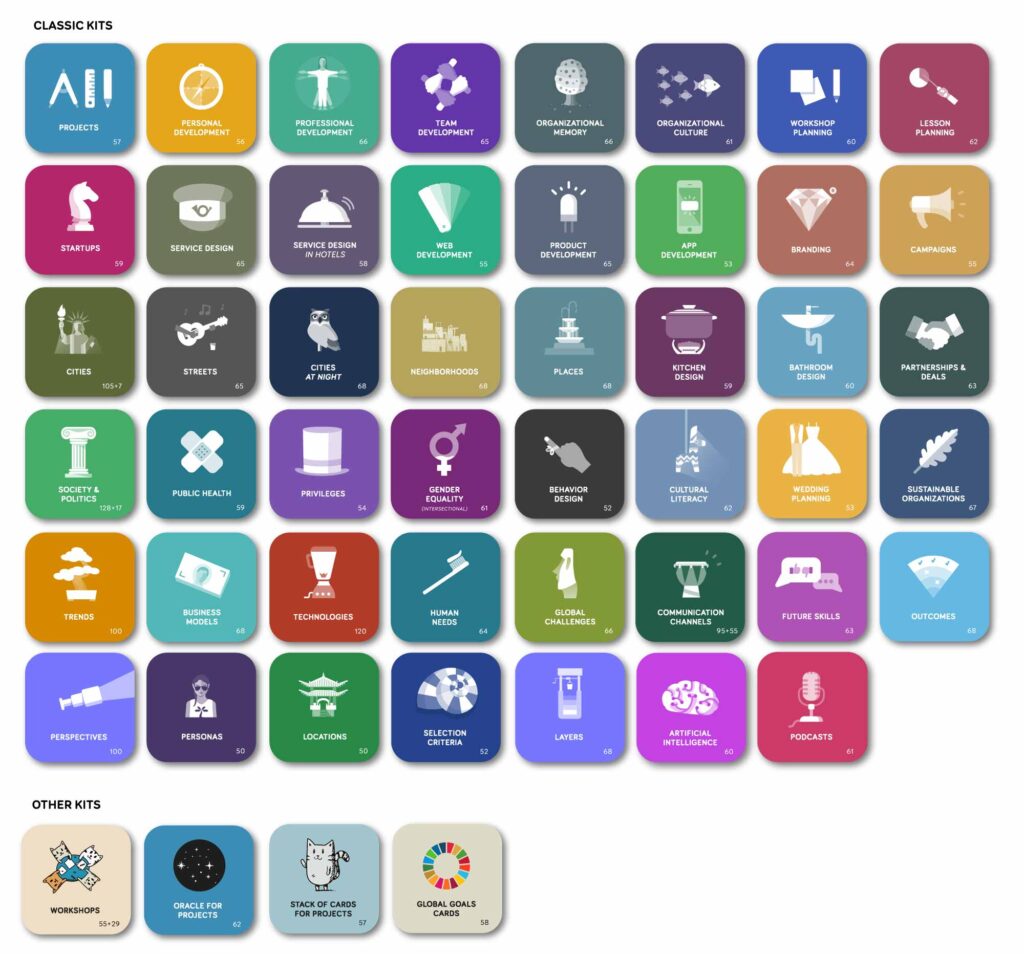Workshop Design
How to use
MethodKit is an open-ended analog tool initially designed to be a flexible co-facilitator in any workshop you design. They help you discuss, map, plan, ideate & prioritize. Below we show how to use the cards and introduce additional tools to make it even easier to work with the cards.

Six common ways to use the cards
There are plenty more, but these are the most common.
Discuss
Great for giving open discussions a little structure. Spread the cards on the table to use as conversation starters.

Map
Great for working with sub-themes and topics. Decide on your different cluster themes and group the cards around them.

Sort
Great for when you are short on time or have clearly defined goals. Sort the cards into different piles depending on your criteria and goals.

Brainstorm
Great for rapid ideation and brainstorming. Use the cards as catalysts for new ideas and solutions. What if .CARD. was the answer?

Prioritize
Great for finding out what is really important or what you should do next. Rank the cards from highest to lowest priority.

Develop ideas
Great for finding ideas of unusual promise. Generate ideas by mixing and mashing cards with existing ideas, other cards or even other kits!


Exercises
Below we explain how to use the kits. Pick one, two exercises or why not make your own method of choice.
Sort the cards on a gameboard
Gameboards allow you to sort and discuss the cards, because you can’t focus on everything.
- Pick which kit to use
- Pick & print a suitable gameboard
- Begin to discuss and sort
Collaborate around a table
Use the cards on a long table to map and think collectively.
- Pick which kit to use
- Choose relevant cards to work with, or use all
- Prepare the table with a big paper sheet (or a paper roll). Use (scotch) paper tape to divide the rows (rows could be current situation and vision). Each card becomes a column.
In table workshops, it often helps to start with a moment of silent reflection, letting participants write down thoughts before pairing up. Working two and two tends to spark deeper conversations. We usually combine this with worksheets or forms where participants highlight what felt most important.
Don’t forget: it’s now easy to transcribe handwriting using AI. Both worksheets and table notes can be turned into a structured dataset you can keep building on after the session.

Use matrix grid to sort
Grids are a good way to sort, get a better understanding, see patterns and find priorities. The grids are designed to fit tables of all sizes.
- Pick which kit to use
- Pick a suitable grid
- Begin to discuss and sort

Example: Sort the cards based on different criteria.
Map together with post-its
Use the cards together with post-its to map and define a topic.
- Pick which kit to use
- Choose a couple of cards that you will work with
- Begin to define each card with post-its.

More about our methodology
This page is a short recap of how MethodKit can be used. If you’re looking for a deeper dive into facilitation and how to apply the kits in practice, head over to our Methodology section.

The 53 kits
Most of our 50+ kits we released could be sorted into two main categories.

33 kits for planning and structure
By using these kits you can create an overview where you can understand, assess and elaborate with different topics.

12 kits for brainstorming and hackathons
These kits let you expand your train of thoughts and create interesting, fruitful discussions. By mixing several kits, the sky is your limit.

Get an overview of all 53 kits
These kits let you expand your train of thoughts and create interesting, fruitful discussions. By mixing several kits, the sky is your limit.